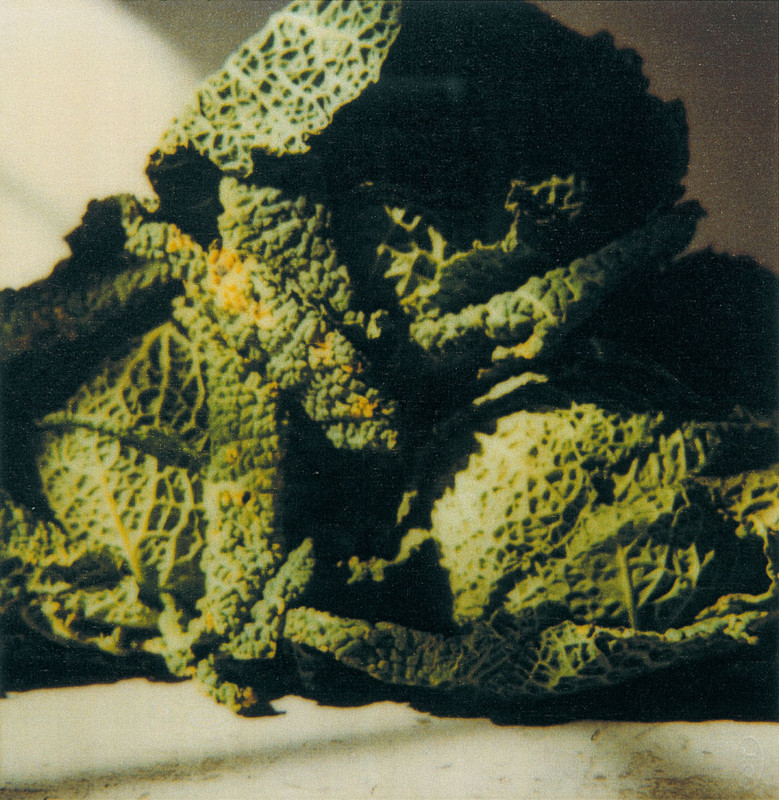Cy Twombly
Photographs, 1951-2010
17 Jul - 30 Oct 2011
The exhibition "Cy Twombly. Photographs 1951-2010" presents more than 100 Polaroid photographs, which were selected in close cooperation with the artist himself. In Siegen the exhibit is supplemented by all the Twombly works belonging to the Lambrecht-Schadeberg Collection.
Cy Twombly, who was born in Lexington, Virginia in 1928 and died in Rome at June, 5th 2011, had been taking photographs since his student days, but did not publicise his photographic images until the 90s. The provenance dates and motifs of the works therefore vary considerably. Besides sections of traditional still-life motifs such as tupils or angel's trumpets, it is possible to find mysterious views into interiors taken in Bassano and Rome in 1985, as well as classical views of ancient temple sites dating from 1951. Shots of flowers and still-life works, landscapes and interiors recall the great themes of art history, from which Twombly coaxed his own quiet, delicate images. With their noticeable lack of definition, atmospheric colours and diffuse motifs, the photographs reveal a different facet of Cy Twombly's creative cosmos in addition to painting, drawing, sculpture and graphic art.
All the photographs were taken with a simple Polaroid camera. Using a special dry print process the unique works were enlarged and reproduced in a limited edition. Due to the rather old-fashioned copying process, the images developed a shiny surface shimmer and appear coarser grained as a whole. The lack of definition in all of these photographs is striking and gives them an indeterminate atmosphere. Twombly used the play of light and shade or over-exposure and radical close-up views to make the subject of the photographs even less clear. The images appear rather antiquated, recalling the style of Pictorialism, which sought to equate photography with painting by chosing artistic subjects and effects such as blurring and fluid transitions around 1900.
Twombly was obviously not concerned with the recognition of his motifs. Instead, his concentration on surface textures enabled him to create a new visual order.
The images' great attraction consists in the charm of the invisible in the visible, the poetic brilliance of light and colour, their revelation of the intangible dimensions of time and space. Contrary to all photography's technical demands, Twombly counters all expectations in this medium as well, surprising the viewer with intimate views of delicate tulip blossoms, lemons, and everyday objects such as glasses and bottles, his shoes, his studio and finally even his paintings. These photographs from more than half a century reunfold Twombly's artistic cosmos in a new way: between fleeting sfumato and expressive gesture, this lies in a combination of the decisive and the indecisive that is almost impossible to grasp, but all the more moving as a consequence.
Cy Twombly, who was born in Lexington, Virginia in 1928 and died in Rome at June, 5th 2011, had been taking photographs since his student days, but did not publicise his photographic images until the 90s. The provenance dates and motifs of the works therefore vary considerably. Besides sections of traditional still-life motifs such as tupils or angel's trumpets, it is possible to find mysterious views into interiors taken in Bassano and Rome in 1985, as well as classical views of ancient temple sites dating from 1951. Shots of flowers and still-life works, landscapes and interiors recall the great themes of art history, from which Twombly coaxed his own quiet, delicate images. With their noticeable lack of definition, atmospheric colours and diffuse motifs, the photographs reveal a different facet of Cy Twombly's creative cosmos in addition to painting, drawing, sculpture and graphic art.
All the photographs were taken with a simple Polaroid camera. Using a special dry print process the unique works were enlarged and reproduced in a limited edition. Due to the rather old-fashioned copying process, the images developed a shiny surface shimmer and appear coarser grained as a whole. The lack of definition in all of these photographs is striking and gives them an indeterminate atmosphere. Twombly used the play of light and shade or over-exposure and radical close-up views to make the subject of the photographs even less clear. The images appear rather antiquated, recalling the style of Pictorialism, which sought to equate photography with painting by chosing artistic subjects and effects such as blurring and fluid transitions around 1900.
Twombly was obviously not concerned with the recognition of his motifs. Instead, his concentration on surface textures enabled him to create a new visual order.
The images' great attraction consists in the charm of the invisible in the visible, the poetic brilliance of light and colour, their revelation of the intangible dimensions of time and space. Contrary to all photography's technical demands, Twombly counters all expectations in this medium as well, surprising the viewer with intimate views of delicate tulip blossoms, lemons, and everyday objects such as glasses and bottles, his shoes, his studio and finally even his paintings. These photographs from more than half a century reunfold Twombly's artistic cosmos in a new way: between fleeting sfumato and expressive gesture, this lies in a combination of the decisive and the indecisive that is almost impossible to grasp, but all the more moving as a consequence.

